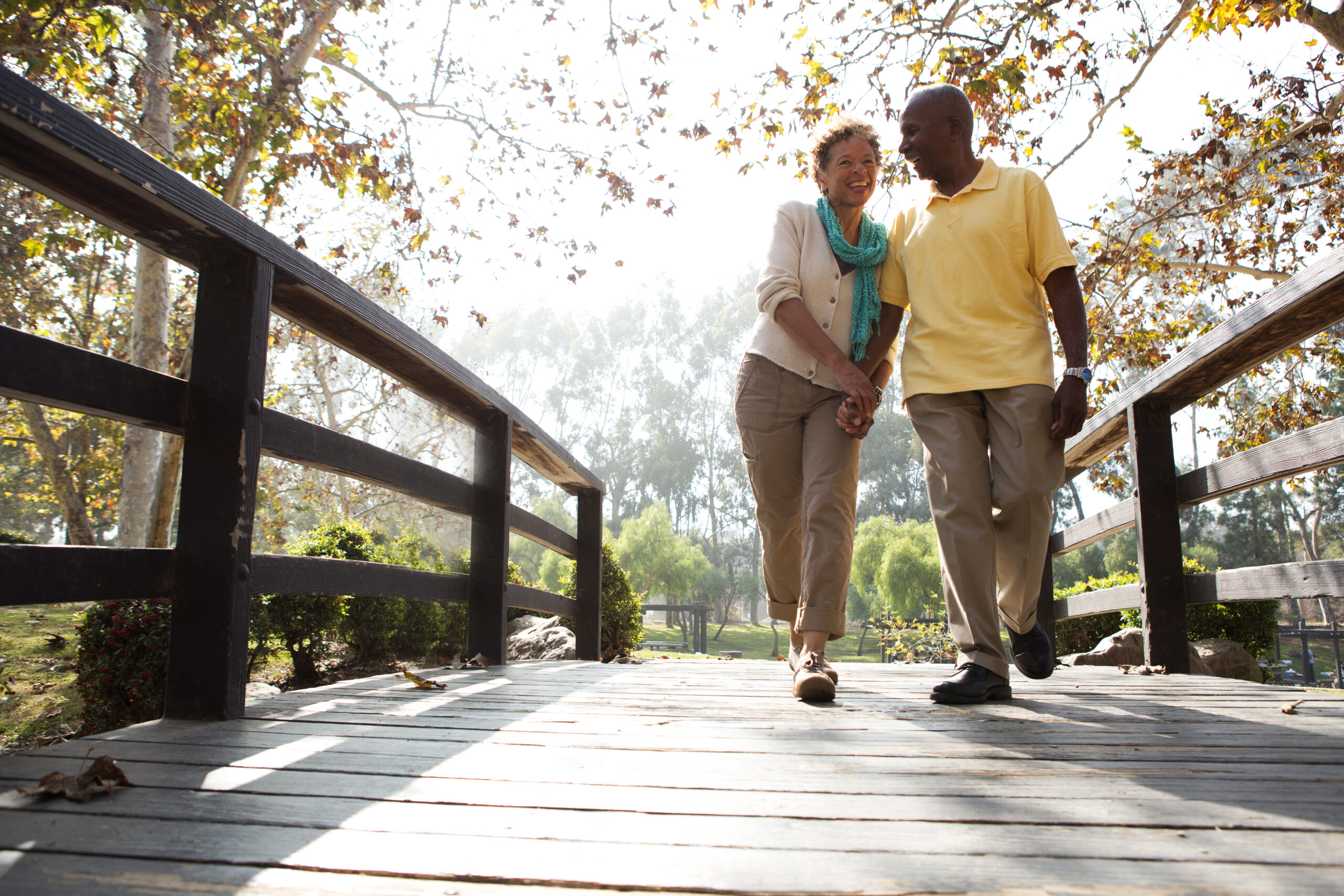4 Min Read
Benefits of Walking for Seniors

As we transition from summer to fall, it’s a great time to get some fresh air and exercise outdoors. There are many low-impact exercises you can do to improve your health and wellness, one of the most beneficial being walking. Low-intensity walks have the same health benefits as higher-intensity power walks. These include improving balance, motor coordination, and stamina, leading to better blood flow and mental clarity.
There are many other benefits to walking.
- Improving circulation. Walking lowers blood pressure, improving heart functions. In fact, walking just 30 minutes per day can reduce the risk of stroke by 20%.
- Increasing mood. Exercise releases endorphins, which improve mood, making you feel happier. This helps reduce symptoms of anxiety and depression.
- Improving bone health. Walking can help reduce the loss of bone mass in those with osteoporosis and the risk of related injuries such as hip fractures.
- Weight loss. Although it might seem obvious, walking burns calories that can equate to losing weight. Maintaining a healthy weight lowers the risk of developing cardiovascular diseases, Type II diabetes, and cancer.
- Strengthening muscles. Walking regularly tones leg, abdominal, and arm muscles, increasing range of motion and decreasing pressure on joints.
- Supporting joints. Joint function improves the more you move. Walking can help loosen your joints, so you avoid the sensation of feeling stiff.
- Promoting social engagement. Even in the age of COVID-19, exercise is important. Walking with a friend or family member can help make exercising easier. Don’t forget about social distancing.
- Aiding sleep. Beyond reducing stress, exercises like walking help promote a strong circadian rhythm, improving sleep.
It’s recommended that seniors get at least 2.5 hours of moderate-intensity aerobic activity per week. Starting an exercise regimen can feel difficult, but it’s vital to your health and overall well-being. Start slow, aiming for 10 minutes per day, and then work your way up. Be sure to take proper safety precautions and always let someone know you’re exercising, especially if you’re doing so alone, in case of an emergency.
Make sure you have a pair of supportive sneakers and choose a walking route that is flat and free of obstacles to avoid any chance of incidents. As you continue to exercise, take notice of how you feel. With the bountiful benefits of walking, you can exercise your way to a happier, healthier, more independent life.

0 Comments